What Flowers Are Good in Full Sun: Top Picks for a Radiant Garden
Finding the right flowers for sunny spots in your garden can make all the difference in creating a vibrant space. Dianthus, Cosmos, and Portulaca are excellent choices for gardens that receive full sun, bringing bursts of color and charm. With a wide variety of hues and shapes, these flowers can easily become the stars of your outdoor space.
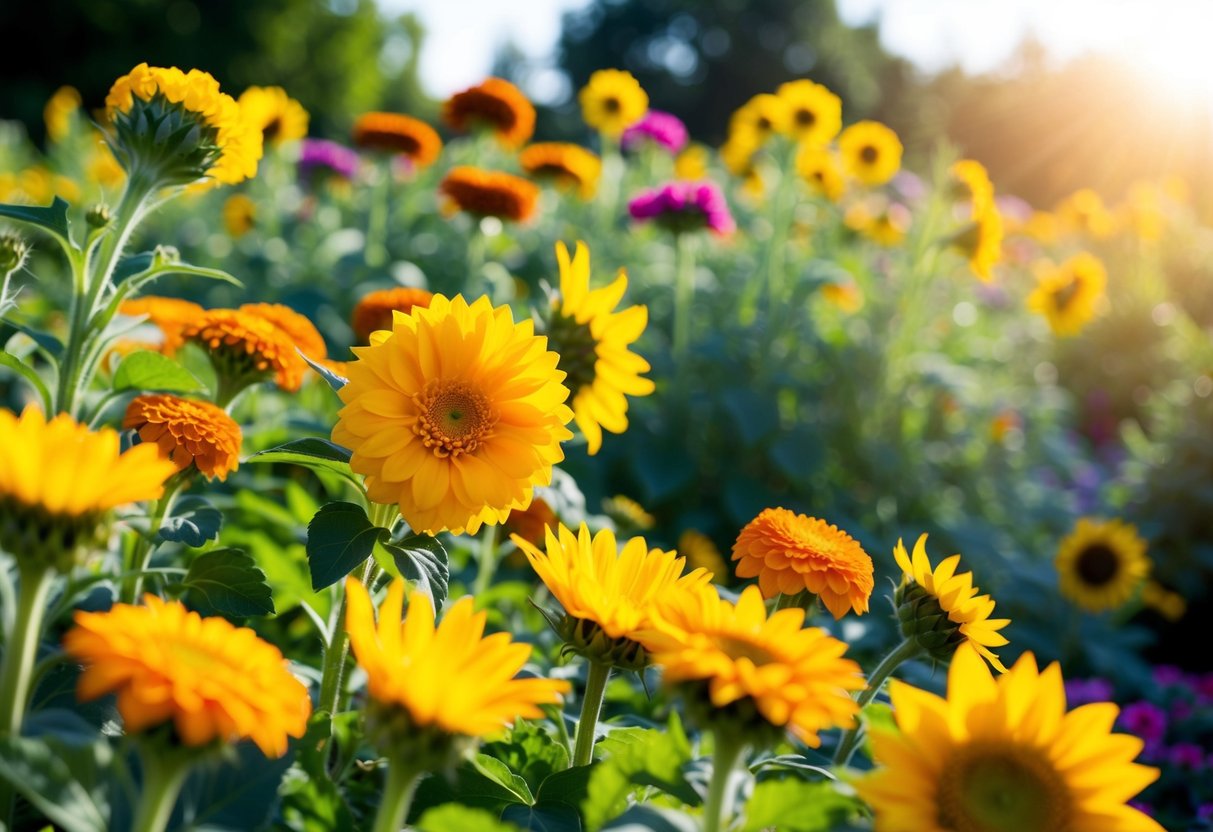
You don’t want your garden to struggle under direct sunlight, so it’s important to pick flowers that thrive in these conditions. For instance, Dianthus thrives in well-drained soil and loves the sunlight, making it perfect for those bright areas. Similarly, Cosmos flowers with their feathery foliage look stunning and grow well in sunny environments.
As you plan your garden, consider the unique needs of each flower for colorful success all season long. Imagine a garden where a variety of flowers complement one another, each basking in direct sunlight and thriving beautifully in full sun areas. By selecting the right blooms, you’ll ensure your sunny garden is both resilient and eye-catching, transforming it into a cheerful sanctuary.
Understanding Sunlight and Garden Placement

When considering plants for your garden, understanding how sunlight affects growth is crucial. It can determine how well plants thrive and how beautiful your garden appears. Picking the correct spot in your yard can make a difference in how your plants, especially sun-loving perennials, grow and flourish.
The Importance of Full Sunlight
Full sunlight means your plants receive at least 6 to 8 hours of direct sunlight every day. This is vital because sunlight provides the energy needed for photosynthesis, helping plants grow strong and healthy. Many full sun plants, like dahlias, require these conditions to produce vibrant blooms and maintain their growth throughout the season.
Some plants, such as the gaillardia, are especially suited for these conditions. These plants handle heat and drought well, making them perfect for areas with intense, unfiltered sunlight. Ensuring your garden receives enough light is essential for lush, colorful displays.
Choosing the Right Spot for Your Garden
Choosing the right spot for planting involves observing how sunlight moves through your garden during the day. Look for areas that have little to no shade between morning and late afternoon. This guarantees that your sun-loving perennials receive the light they need to thrive.
Check your garden’s microclimate, as some spots might be warmer or more exposed to wind. Make sure the soil is well-drained, as many full sun plants prefer this condition. By carefully picking the spot for your garden, you create an environment where your plants can grow healthy and strong.
Annuals That Thrive in Full Sun
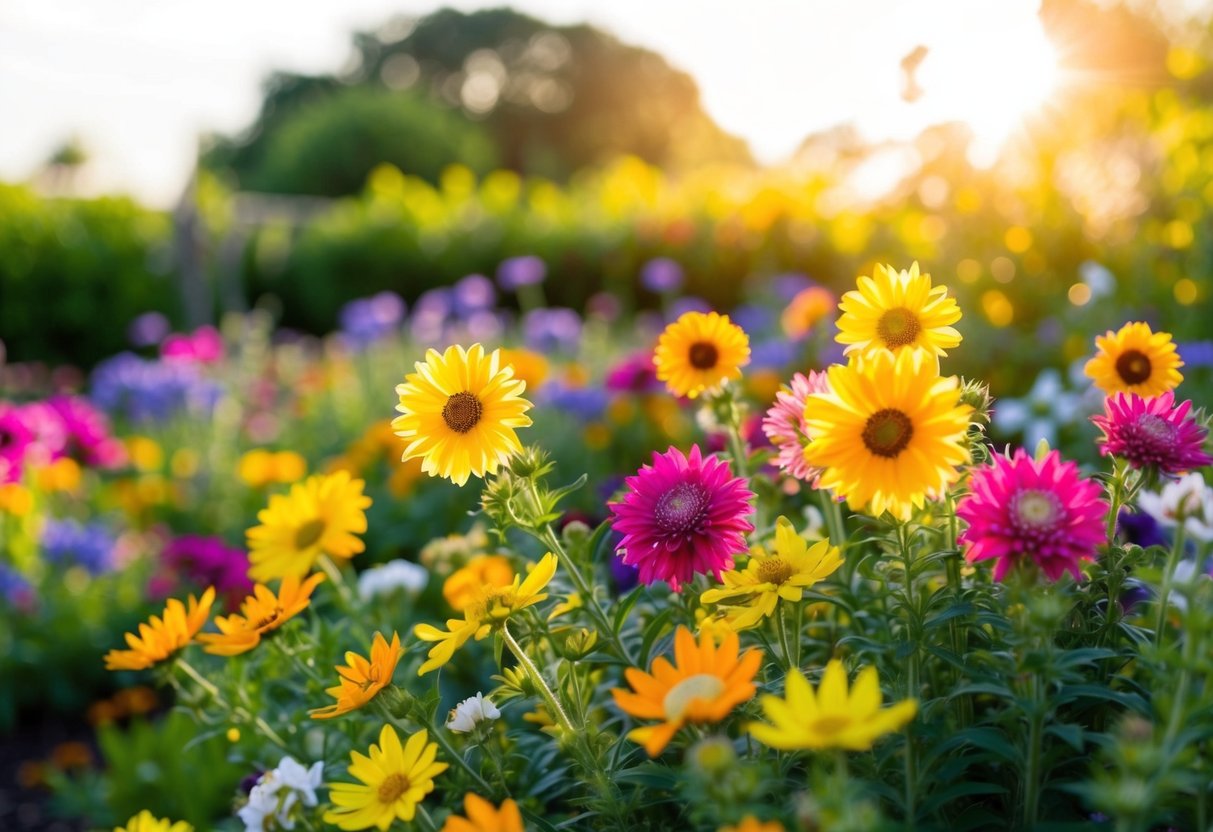
When choosing annuals for full sun, focus on vibrant colors and plants that withstand hot, dry conditions. You’ll find many options that are not only tough but also beautiful, brightening up your garden throughout the summer.
Colorful Annuals for Your Summer Garden
In full sun, zinnias are a favorite choice. These flowers come in a wide range of colors and can handle bright, sunny spots well. Marigolds are another great option, known for their golden hues and ability to repel pests.
Petunias bring charm with their trumpet-shaped blooms and come in almost every color imaginable. They perform well in both garden beds and containers. Cosmos offer a more airy appearance, with delicate petals in shades of pink, purple, and white. These annuals are not only beautiful but also attract pollinators like bees and butterflies.
Heat-Tolerant Annuals for Long-Lasting Blooms
If your garden gets particularly hot, consider sunflowers. They thrive in sunny areas and can grow impressively tall, providing blooms that last throughout the summer.
Angelonia might be less familiar, but it excels in hot, dry conditions. It produces spikes of flowers and doesn’t require much maintenance. Geraniums are another reliable choice, flourishing even as temperatures rise. They offer rich reds and pinks, adding continuous color to your space.
For something unique, try African daisies. These flowers thrive in about six to eight hours of direct sunlight and boast distinctive white and purple blooms. Deadheading them encourages more flowers and a vibrant garden all season long.
Perennials Perfect for Sunny Gardens
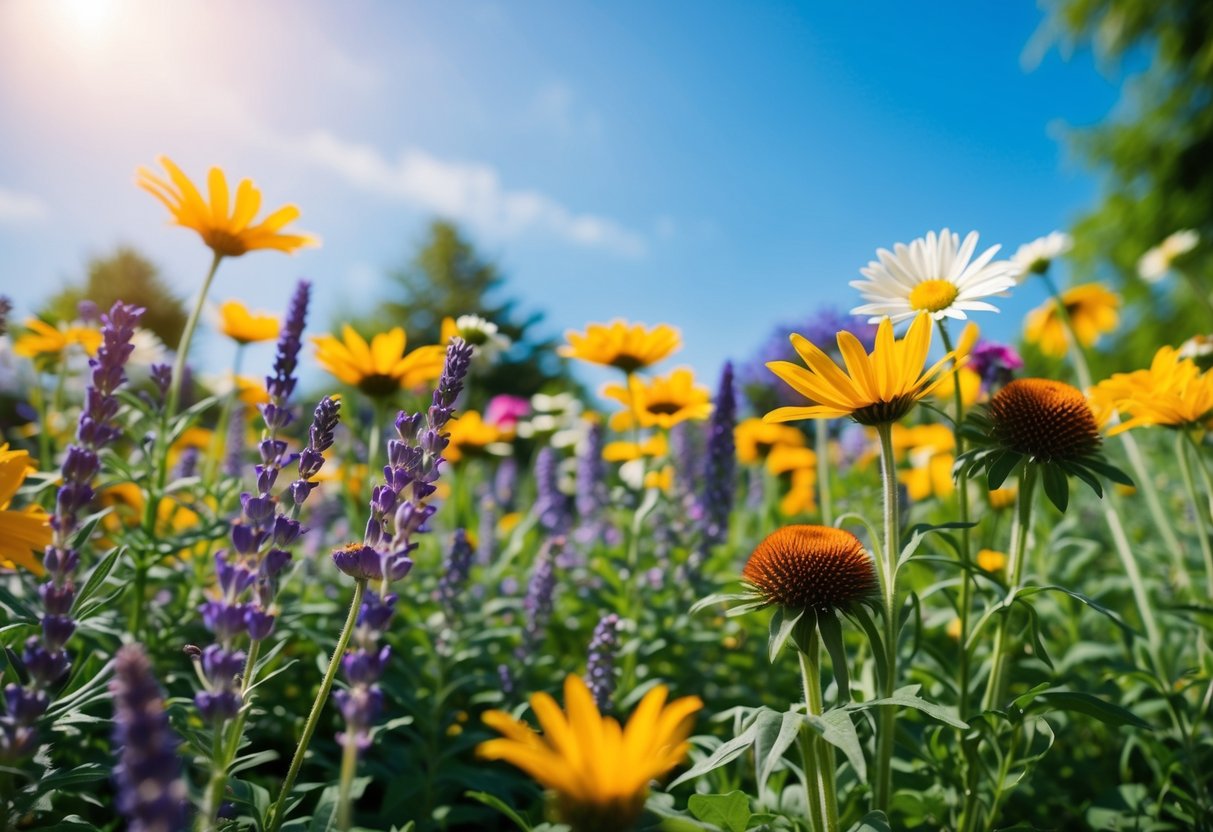
Bright, sunny spots in your garden can become vibrant with the right choice of perennials. From long-lasting blooms to easy-care native varieties, these plants thrive under the sun’s rays and add color and life to your outdoor spaces.
Long-Living Perennials for Full Sun
Perennials are your best friends when it comes to garden longevity. Coneflower and Echinacea are standout choices for sunny gardens. Both are known for their ability to endure dry conditions and their vibrant blooms that attract butterflies.
Black-eyed Susan is another popular choice. These flowers are tough and can withstand heat, offering bright yellow blooms that last from late summer into fall. They also provide food for bees, making them great for attracting pollinators.
Coreopsis adds a splash of yellow or pink. With its daisy-like flowers, it is drought-tolerant and low-maintenance. You can use it to fill gaps in your flower beds, as it blooms profusely. Daylily is similarly resilient and offers a variety of colors, ideal for sunny spots.
Native Perennials for Easy Care
Native perennials can simplify garden care due to their adaptability. Coneflower is an excellent native perennial. It’s drought-resistant and thrives in full sun, offering blooms that attract a variety of pollinators like bees and butterflies.
Black-eyed Susan, another native choice, is prized for its tough nature and vibrant blossoms. You’ll love how they bloom with little fuss, requiring minimal water once established. They blend well with other native plants, supporting local wildlife.
Coreopsis, also native, stands out for its long flowering season and resilience in sunny areas. It can handle different soil types, making it ideal for novice gardeners. You’ll appreciate the easy upkeep and continual blooms that add cheerful colors to your space.
Caring for Sun-Loving Flowers
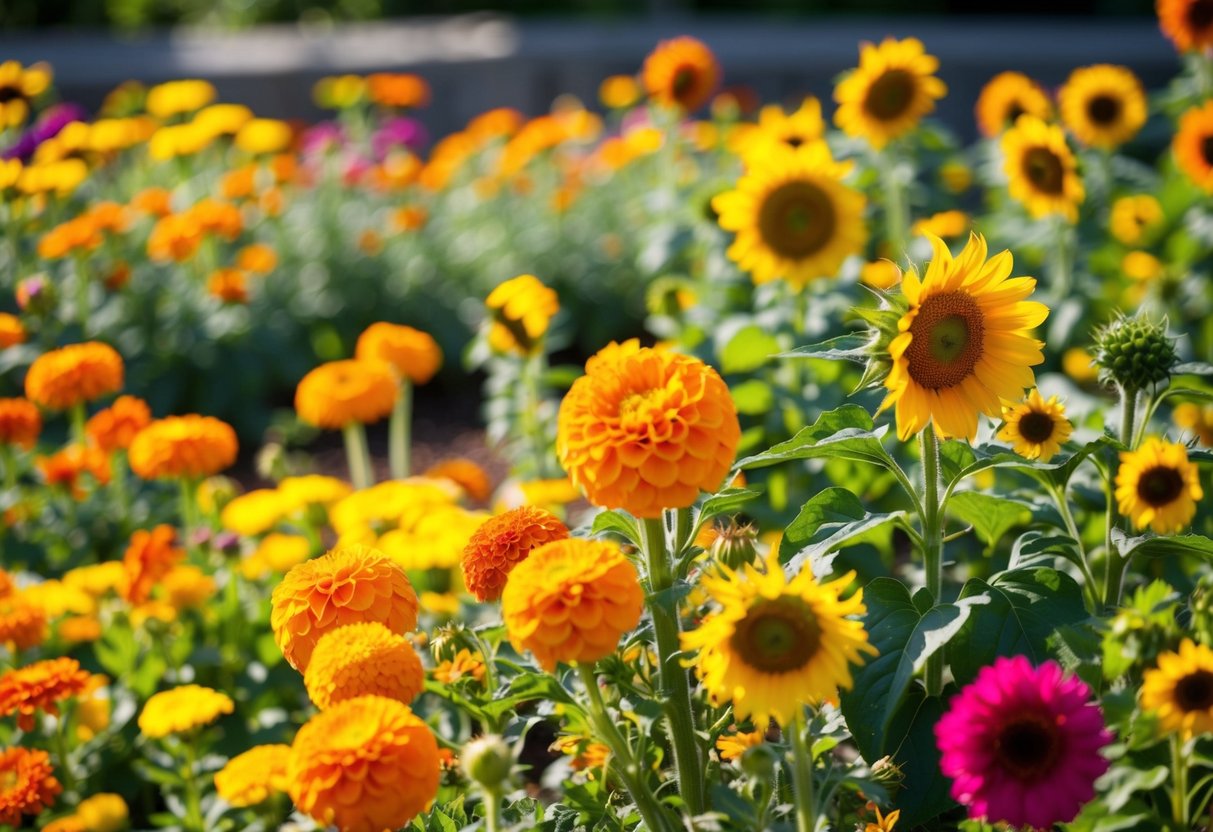
Taking care of sun-loving flowers like those in a summer garden involves specific practices for optimal growth. It’s important to manage both watering and soil conditions, ensuring flowering perennials and well-drained flower beds thrive in full sun.
Watering and Fertilization Tips
Sun-loving flowers need regular watering, especially during dry spells. Aim to water early in the morning to prevent evaporation and fungal diseases. Use a soaker hose or drip irrigation to direct water to the roots, which helps keeps leaves dry.
Fertilize your plants every 4-6 weeks during the growing season. Choose fertilizers that have a balanced N-P-K ratio or one that’s slightly higher in phosphorus to help boost blooms. Liquid fertilizers or slow-release granules work well. However, avoid over-fertilizing as this can lead to lush foliage with fewer blooms.
Remember to monitor rain levels. If natural rain is adequate, reduce additional watering. Your goal is to provide consistent moisture without waterlogging the soil.
Soil and Drainage Requirements
Well-drained soil is crucial for sun-loving flowers to prevent root rot. Sandy or loamy soil types work best, but you can improve drainage in clay soil by adding organic matter like compost.
Flower beds in full sun should have soil that can hold moisture yet allow excess water to escape. Test your garden’s drainage by digging a small hole and filling it with water. If the water drains within a few hours, your soil’s drainage is good.
Amend the soil with organic matter to increase nutrients and improve texture. For flowering perennials, maintaining the right soil conditions helps them thrive well beyond the first season, ensuring your summer garden stays vibrant.
Attracting Pollinators with Full Sun Plants
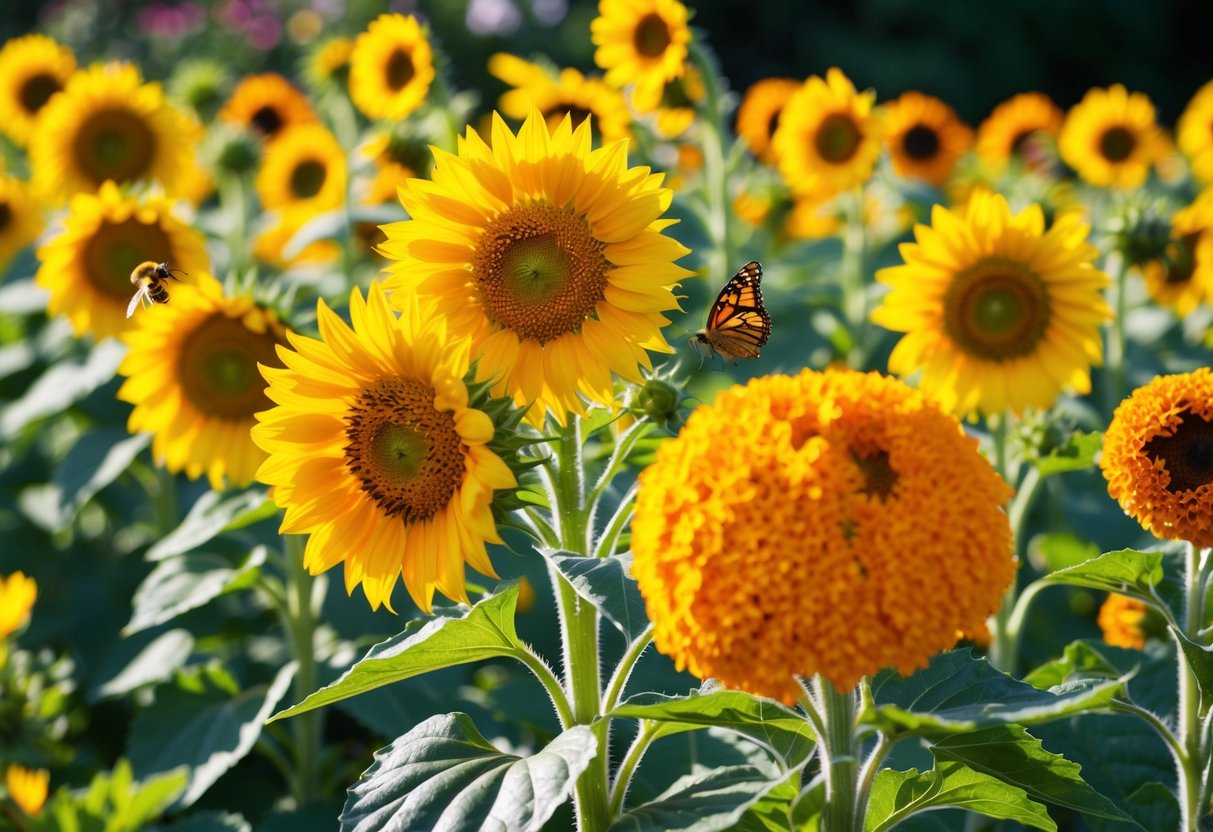
Creating a garden that attracts pollinators like bees and butterflies is a rewarding way to support the environment. By choosing plants that thrive in full sun, you can ensure your garden blooms beautifully.
Bee Balm is a vibrant flower that attracts bees and butterflies. Its spiky blooms add color to your garden while helping pollinators thrive.
Consider salvia plants, which come in many shapes and colors. They’re adored by hummingbirds and do well in sunny spots.
Lavender offers a wonderful scent and is a favorite among pollinators. It’s also great for keeping away unwanted insects like fleas and mosquitoes.
Butterfly Weed is another excellent choice. Its bright orange flowers are a magnet for butterflies.
| Plant | Attracts | Sun Requirements |
|---|---|---|
| Bee Balm | Bees, Butterflies | Full Sun |
| Salvia | Hummingbirds | Full Sun |
| Lavender | Bees, Butterflies | Full Sun |
| Butterfly Weed | Butterflies | Full Sun |
When arranging your garden, think about mixing these plants into a cutting garden. This way, you can create beautiful flower arrangements while supporting pollinators.
Planting a variety of these full sun plants will make your garden a lively, buzzing space for pollinators. Enjoy the vibrant life and beauty it brings.







